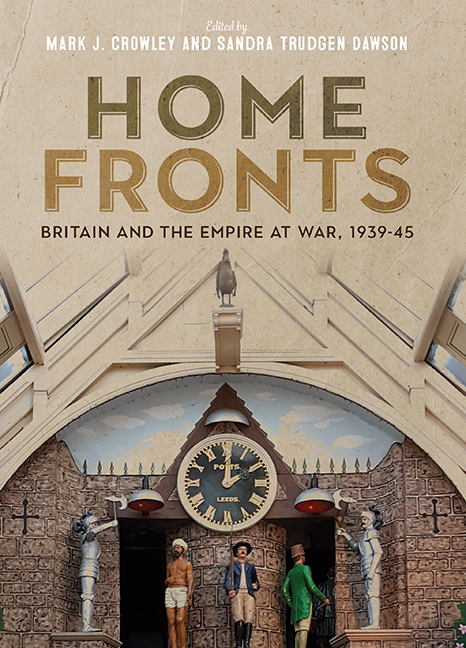Book contents
- Frontmatter
- Dedication
- Contents
- List of Illustrations
- List of Contributors
- Acknowledgements
- List of Abbreviations
- Introduction: Home Fronts and the Empire at War
- Part One Consumption on the Home Front
- Part Two The Militarized Home Front
- Part Three Technology, Danger and Waste on the Home Front
- Select Bibliography
- Index
Introduction: Home Fronts and the Empire at War
Published online by Cambridge University Press: 30 August 2017
- Frontmatter
- Dedication
- Contents
- List of Illustrations
- List of Contributors
- Acknowledgements
- List of Abbreviations
- Introduction: Home Fronts and the Empire at War
- Part One Consumption on the Home Front
- Part Two The Militarized Home Front
- Part Three Technology, Danger and Waste on the Home Front
- Select Bibliography
- Index
Summary
ON 3 September 1939 Britain declared war on Germany. As an imperial power, Britain, like France, Germany and Japan, expected to use the resources and ‘manpower’ of each colony and territory for the war effort, making the war truly global. As Ashley Jackson points out, the ‘[British] Empire and Commonwealth was the world's largest political, economic and military unit, and it went to war as one’. Millions of colonial and dominion troops fought and millions more produced uniforms, exported foodstuffs and military material, served as medical and nursing personnel and provided homes for child evacuees, servicemen and women stationed on their shores. Home fronts around the world were transformed and militarized for use by, and for, the imperial power. Civilians were conscripted as agricultural labourers, workers in munitions factories, shipbuilders and aircraft builders. They would work alongside military personnel. Henceforth, home fronts throughout the empire experienced increased policing, shortages of consumer goods and food rationing, underwent the pressures of Air Raid Precautions (ARP) and lived with curfews, censorship and curtailed travel.
As a scholarly topic of investigation, the British home front during the Second World War has received considerable attention, especially in areas documenting the experiences of women, children and refugees and the work of men and women codebreakers. As Linsey Robb argues in this volume, women's wartime work experience is largely celebrated but, at the same time, the masculinity of men in reserved occupations came under scrutiny, since the ideal masculine image was the man in uniform. This was particularly the case for the men of the Royal Air Force, whose image was immortalized in national memory after the Battle of Britain. Indeed, the Battle of Britain, the devastation of the British home front during the months of bombing and the way civilians and officials responded continue to be the subject of new studies. In this volume, Mark J. Crowley illustrates the ingenuity and technological innovations that allowed the Post Office to continue functioning and even to improve services during the bombing.
- Type
- Chapter
- Information
- Home Fronts - Britain and the Empire at War, 1939–45 , pp. 1 - 16Publisher: Boydell & BrewerPrint publication year: 2017

